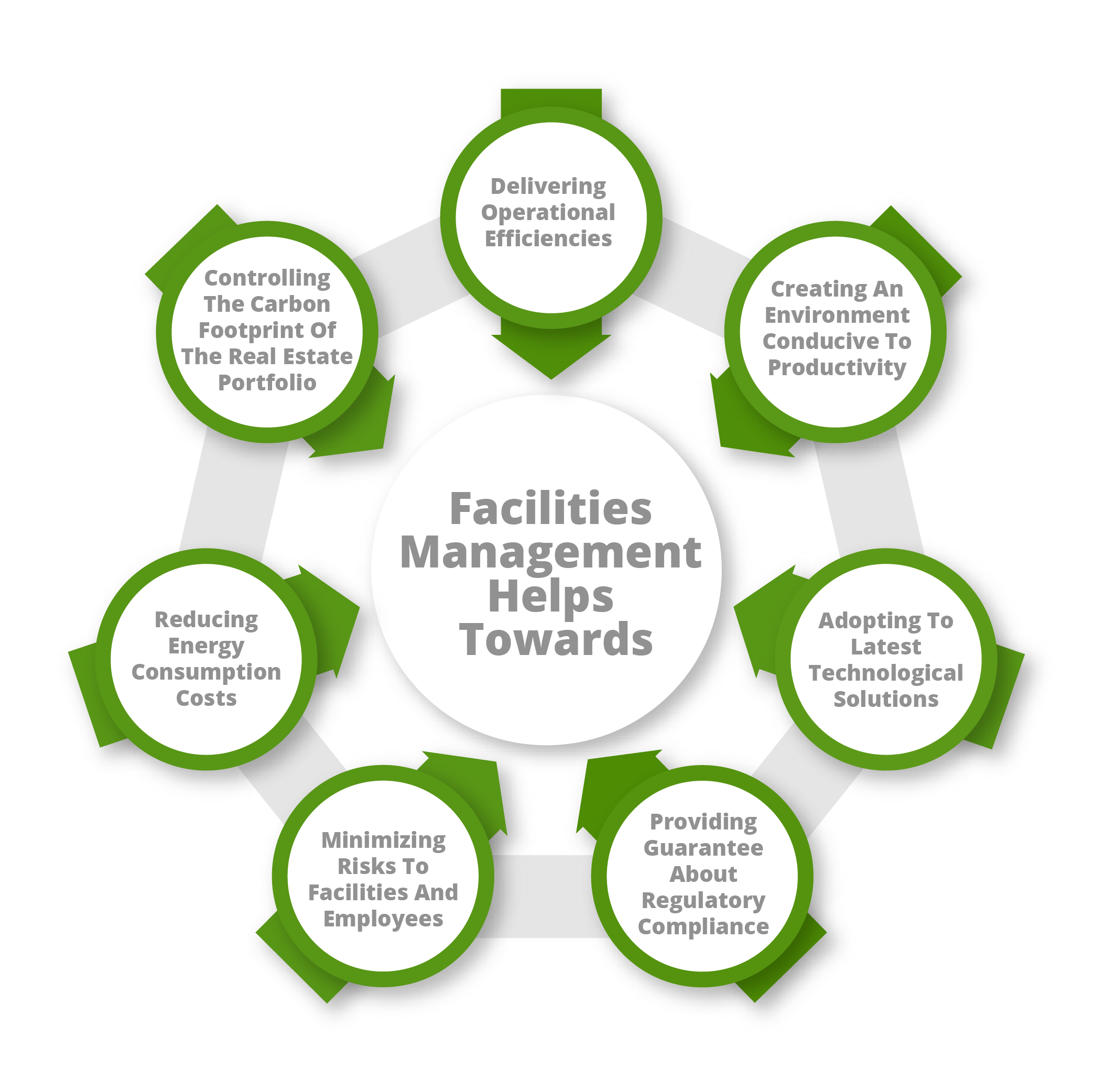Top Benefits of Total Facility Management for Streamlined Procedures
Total Facility Management (TFM) stands for a calculated technique to enhancing operational performance by incorporating various solutions, such as upkeep and protection, under a unified management framework. This combination not only reduces redundancies yet likewise leverages information analytics for informed decision-making and anticipating maintenance. TFM assists in structured communication among stakeholders, straightening operations with broader business purposes. The concern remains: what particular advantages can companies harness from embracing TFM, and exactly how might these benefits transform their operational landscape?
Boosted Functional Performance
Enhanced operational efficiency is a key benefit of applying total facility management (TFM) techniques. TFM incorporates an extensive approach to managing a center's resources, procedures, and facilities, ultimately improving operations. By settling various solutions-- such as maintenance, cleaning, security, and area management-- TFM reduces redundancies and enhances sychronisation amongst different operational features.
The combination of modern technology additional enhances this performance. Advanced facility management systems supply real-time data analytics, enabling facility managers to make informed decisions that enhance workflow and resource appropriation. Anticipating maintenance techniques, for instance, anticipate tools failings prior to they happen, decreasing downtime and extending property life-span.
Additionally, TFM advertises standardized procedures throughout different divisions, guaranteeing uniformity and quality in solution distribution. This harmony lowers functional interruptions and promotes a much more joint workplace. Therefore, employees can concentrate on their core responsibilities, driving performance and improving general efficiency.
Price Reduction and Savings
Carrying out total facility management (TFM) not just boosts operational efficiency yet likewise significantly contributes to set you back reduction and savings. By consolidating different solutions under a solitary management structure, companies can eliminate redundancies and simplify procedures, therefore lowering functional costs. TFM enables far better procurement methods, permitting companies to work out bulk buying contracts with providers and service providers, leading to reduced prices.
Moreover, TFM emphasizes precautionary maintenance, which minimizes unforeseen breakdowns and prolongs the life-span of essential tools. This positive technique not only decreases fixing costs but additionally enhances the reliability of facilitiess, making certain continuous procedures. In addition, energy effectiveness initiatives, frequently a key emphasis of TFM, lead to significant savings on energy bills, as facilitiess are enhanced for reduced energy consumption.
Improved Source Management
Reliable source management is a foundation of total facility management (TFM), enabling companies to enhance making use of their assets and workforce. By applying TFM methods, companies can adequately assess their source allotment, ensuring that every property is utilized successfully and properly. This holistic approach allows for the identification of underperforming resources and the potential for reallocation or enhancement.
In enhancement, TFM facilitates the integration of innovation for real-time surveillance of sources, which helps in forecasting upkeep requirements and protecting against costly downtime. By leveraging data analytics, organizations can make enlightened choices regarding source deployment, eventually improving productivity and reducing waste.
Moreover, TFM advertises a society of continual improvement, motivating groups to routinely evaluate and improve their resource management practices. Total Facility Management. This proactive position not just minimizes functional disruptions but likewise promotes development, as staff members are equipped to suggest renovations based upon their direct experiences with source application
Streamlined Interaction Channels
In total facility management, streamlined interaction networks play a crucial role in promoting cooperation and efficiency across groups. Effective communication makes sure that all stakeholders, including facility supervisors, upkeep personnel, and solution suppliers, are lined up with organizational goals and functional needs. By developing clear lines of interaction, groups can promptly deal with problems, share updates, and implement solutions, therefore reducing downtime and enhancing performance.
With centralized communication systems, information is easily accessible, permitting real-time updates on upkeep requests, resource allocation, and task timelines. This openness not only lowers misconceptions but also encourages staff members to make informed choices quickly. Additionally, structured interaction facilitates far better control during emergencies, making certain that all employees are informed and can react promptly.

Raised Concentrate On Core Activities
A crucial advantage of total facility management is the raised focus on core activities, allowing organizations to focus on their primary service objectives - Total Facility Management. By outsourcing non-core functions such as maintenance, security, and cleaning, companies can reroute their sources and energy towards critical campaigns that directly add to their competitive benefit and growth
Total facility management incorporates various functional jobs under a solitary umbrella, fostering effectiveness and reducing redundancy. This consolidation not just streamlines processes yet additionally enhances liability, guaranteeing that every aspect of the facility operates harmoniously without drawing find out this here away attention from what genuinely matters-- core business functions.
In addition, this approach enables employees go to my blog to devote their effort and time to tasks that drive innovation and enhance consumer satisfaction, as opposed to getting bogged down by operational difficulties. With a trusted facility management partner taking care of day-to-day operations, companies can accomplish greater agility, respond quickly to market changes, and preserve a sharper concentrate on their goal.
Inevitably, enhanced emphasis on core activities brings about improved total efficiency, permitting organizations to enhance their market position and accomplish their tactical objectives better. - Total Facility Management
Verdict
In verdict, Total Facility Management significantly improves operational efficiency by consolidating essential solutions and leveraging data analytics for informed decision-making. Expense reductions and enhanced source management add to general financial savings, while structured interaction channels foster collaboration amongst stakeholders.
Total Facility Management (TFM) stands for a tactical method to boosting operational effectiveness by incorporating different services, such as upkeep and safety, under a unified management framework.Improved functional performance is a key advantage of implementing total facility management (TFM) strategies. Advanced facility management systems give real-time data analytics, allowing facility supervisors to make click here to find out more enlightened decisions that enhance operations and source allocation.Applying total facility management (TFM) not just increases operational effectiveness yet additionally substantially adds to set you back reduction and savings.Effective resource management is a foundation of total facility management (TFM), enabling organizations to maximize the use of their properties and labor force.